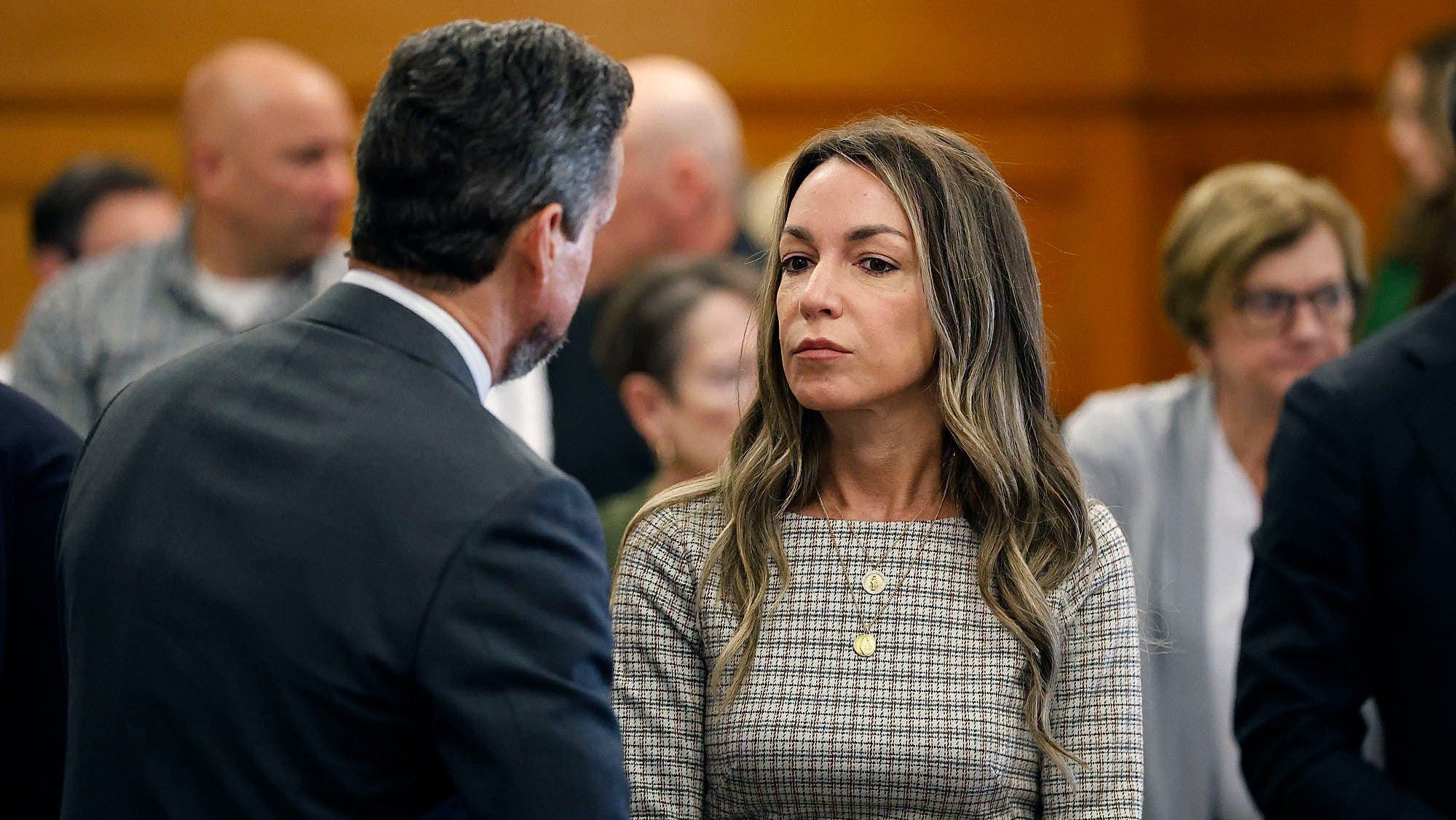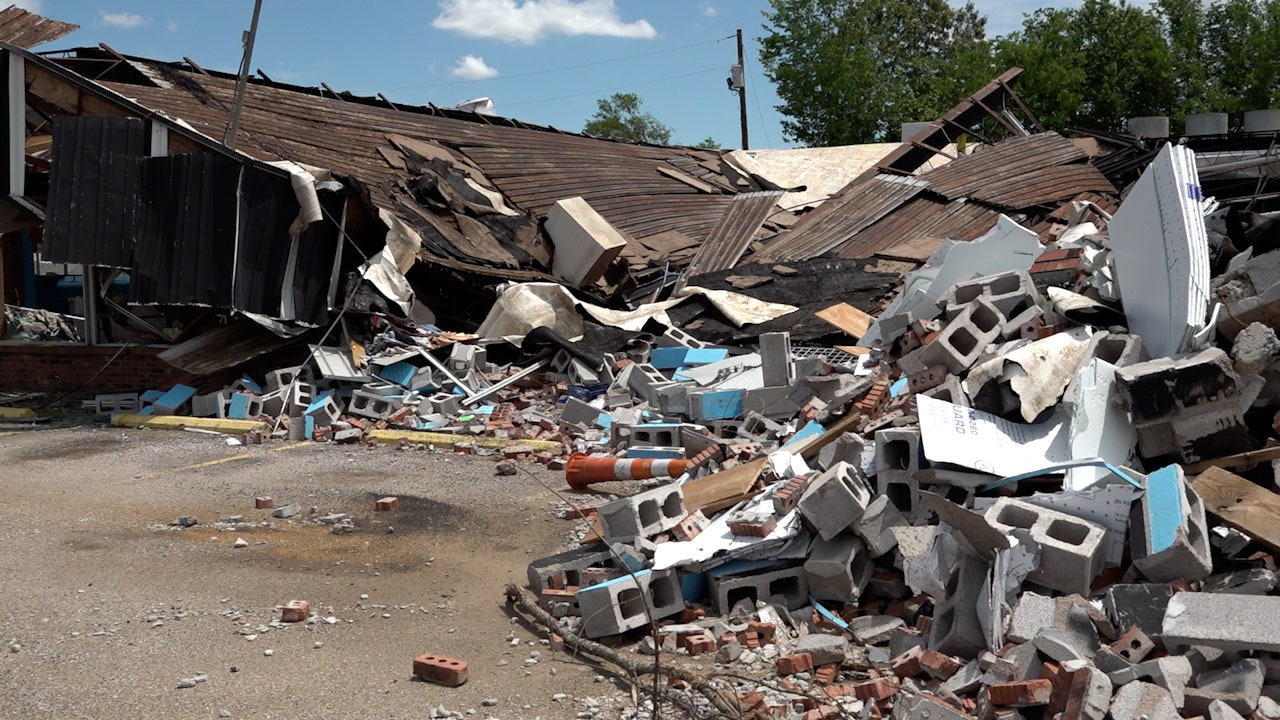It always seems like the one thing you actually need in your pantry is the hardest to find. The food container lids have vanished, canned goods are scattered on every shelf and the spaghetti you swear you bought last week is nowhere to be seen. But hey, at least you have three jars of peanut butter you probably don't need! If keeping your pantry in order feels like an endless task, you're not alone. That's why we turned to the pros to learn how to organize your pantry.
Most organizers will tell you that the first step to decluttering the pantry is taking everything — yes, everything — out of the pantry. This is the perfect time to check expiration dates and throw out any food you're not going to eat. If you haven't eaten pickled asparagus in a year, odds are you're never going to. As for non-food items like food storage containers, water bottles and appliances, take stock of what you use daily versus what you rarely use. Relegate holiday serving pieces and other items you pull out a few times a year to top shelves or other storage areas outside the kitchen.
Whether your pantry just needs a refresh or a complete overhaul, we've got expert tips and products to help. (For more kitchen organization, check out our expert-sourced list of the best kitchen cabinet organizers and our guide to the best kitchen organizers of 2025).
1. Group similar items in zones
The pantry can be a big pain point, says Robyn Reynolds, owner of Organize2Harmonize. "With no organization, you don't know what you have and you end up buying more and more of the same." To better keep track, she advises creating zones: baking, breakfast, sauces, grains, snacks, canned goods, drinks and so on. Use baskets or bins to keep zoned items together.
This sleek wire basket measures 9"H x 13.5"W x 9"D and is stackable so you can take full advantage of tall cabinets or pantry shelves that have lots of space between them. We love that you can reach in rather than having to unstack two baskets to get into the lower one.
2. Label everything
Once you've identified your pantry zones, use labels on containers where you can't see the contents — but also on shelves and in drawers so everyone in the house knows what goes where, no questions asked. "Even if creating a label for where you keep the cooking spoons seems silly, do it anyway," says Katrina Teeple, owner of Operation Organization. "Labels keep us honest with ourselves. They also support family members in putting things back where they belong! You can’t argue with a label. It says what it says!"
Unlike other label makers that require you to connect to your phone or computer, this one lets you type directly in the machine. It doesn't get more simple — and it also comes with three different fonts and 250 symbols so you can personalize your designs.
3. Ditch the packaging to create space
"Take small containers and packets out of bulky boxes. You'll save space and keep food fresh," says Elia Wolberger, a chef and meal prep expert in New York City. This also helps you locate smaller items easily. Once items are out of all their packaging, you can corral them in clear drawers. If you have deep shelves, look for long, clear bins to make the most of the space. And don't forget to group like with like!
These clear drawers are perfect for things that tend to get lost in the pantry, such as sauce or seasoning packets, snack bars, individual cups of apple sauce and more. You can stack these to create more storage without adjusting shelves and repurpose them as your needs change. The pull-out design is also useful for bathroom storage, especially under the sink.
These bins are easy to pull out, and a set comes with three different sizes for everything from tall soda bottles to mini jars of jam. "You can group all your shelf-stable snacks together, then just grab one or two and toss them in your bag for the day," says Wolberger.
4. Put bottles and jars on turntables (aka lazy Susans)
"I love a turntable," says Marlena Masitto, owner of Philly Neat Freaks. "It helps with visibility for sauces, especially. Plastic ones are easier to clean, and I like a bit of a lip so things don’t fly off. Open formats are often better than ones with compartments, which can be too limiting in terms of the size of items."
A plastic turntable like this works well to contain lots of small condiment jars or bottles that could get lost at the back of the shelf and give them more visibility. The non-skid base and slightly raised lip keep items secure and the 15-inch size is ideal for deep pantry shelves.
If you and your crew are Stanley cup fans, this rotating water bottle organizer is a must. This turntable fits six 40-ounce tall tumblers. If the cups have a dedicated spot, no one can complain that they cannot be found!
This turntable has a 3.5-inch lip, making it ideal for taller bottles of dressings and condiments that can tip over. It's made of BPA- and chlorine-free shatter-resistant plastic and should be hand-washed — though it's easy to wipe clean.
5. Customize your shelves
"It's easy to create more storage inside cabinets with risers because they take advantage of unused vertical space," explains professional organizer Zeenat Siman. She recommends measuring your tallest items, then adjusting the shelves accordingly. If you can't adjust the shelves (or don't have enough), pick up some stackable or adjustable risers.
These metal risers are stackable, which means they can double or triple the surface area of a particularly high shelving space, making room for cans or other short containers. Bonus: You can put them together almost instantly, without tools.
Don't just look up — look out, too. This riser expands widthwise from 16 to 32.5 inches. Sturdy steel construction means it won't buckle under the weight of your dry goods or dishes.
Ready to move on to the next room? Here are the best closet organizers (and how to clean your closet like a pro) and the best bathroom organizers. Plus, check out how to declutter your home once and for all.
.png)
 German (DE)
German (DE)  English (US)
English (US)  Spanish (ES)
Spanish (ES)  French (FR)
French (FR)  Hindi (IN)
Hindi (IN)  Italian (IT)
Italian (IT)  Russian (RU)
Russian (RU) 




Comments